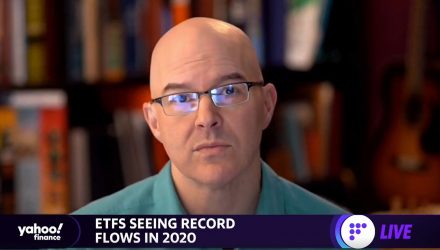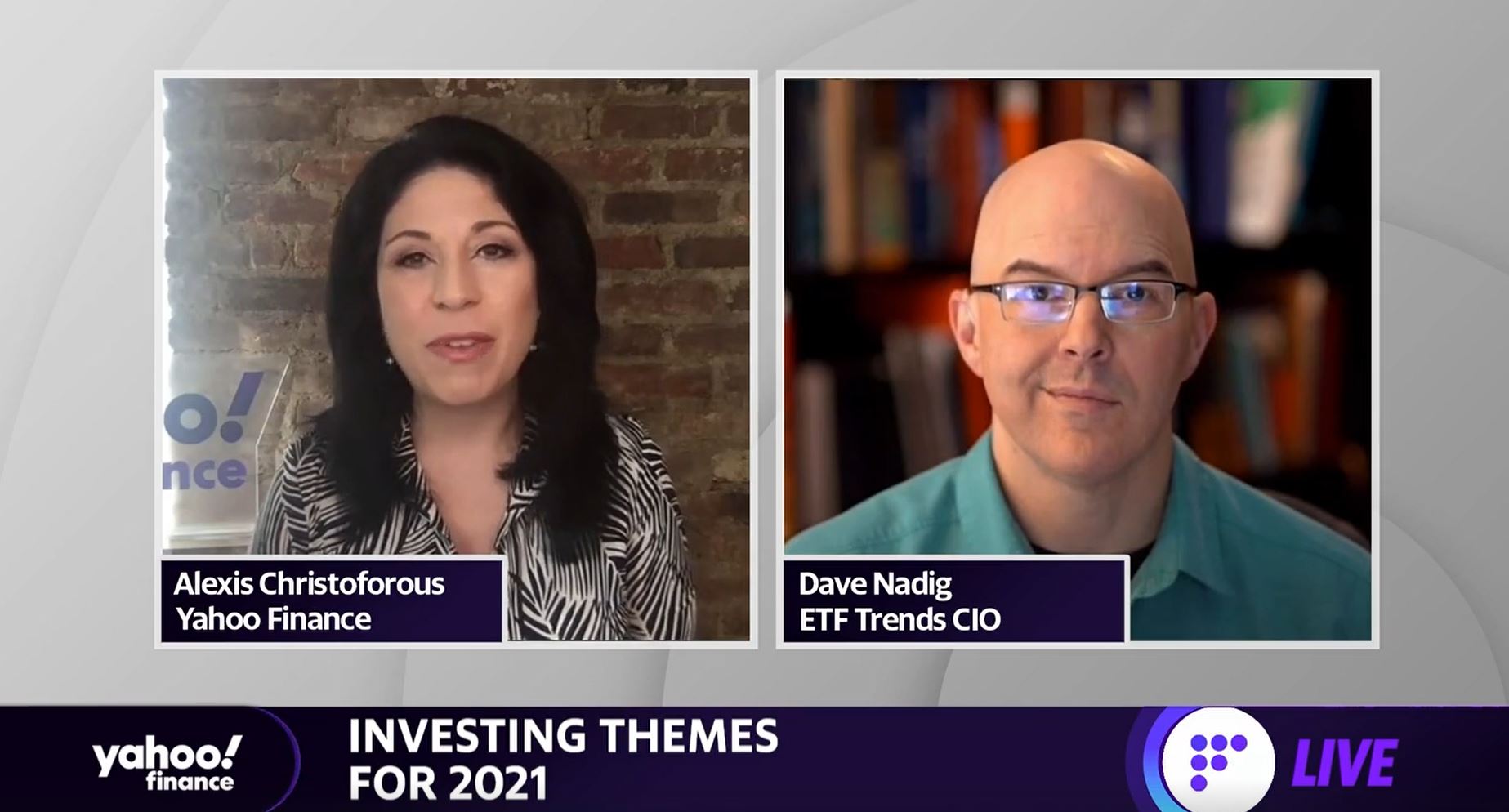With 2021 quickly approaching, it’s important to consider how to positively evolve when it comes to properly structuring stock portfolios. ETF Trends’ Director of Research and CIO, Dave Nadig, spoke with Yahoo Finance’s Alexis Christoforous on “Yahoo Finance Presents,” presented by T. Rowe Price, about investment strategy heading into 2021, along with the record ETF flow of 2020.
At the end of the year, as Nadig explains, there looks to be an all-time record with a year close-out at around $500 billion inflows into ETFs. There have been record flows into active, fixed income, and ESG ETFs. There are stories behind each of these areas, but overall, they solved problems for all kinds of investors.
Considering that these flows came at the expense of mutual funds, investors chose ETFs over the former for a couple of reasons.
Nadig notes, “A big one we have to acknowledge is that the vast majority of equity mutual funds are actively managed. Historically, active management hasn’t worked as a class. It doesn’t mean that no active manager ever outperforms. However, as a class, when we have a big hiccup in the market, we tend to see the same pattern. Actively managed mutual funds get sold, and they’re often expensive and haven’t performed. That money sits in money market funds for a while. And when it comes back into the market, it comes back into ETFs.”
As Nadig continues to explain, this money comes back into ETFs for a couple of reasons. A major reason – most ETFs are passively managed, and therefore much less expensive. That cost advantage alone often drives investors over to the ETF side of the fence.
The other thing is that ETFs are more tax efficient. Very few ETFs pay capital gains out every year. Investors will get what they get when they buy it, and when they sell it. There’s no ongoing worry about dealing with capital gains month after month and year after year.
Investing In 2021
As far as possible to predict investing themes of 2021 to keep an eye out for, Nadig states how ESG will remain a big one. After $30 billion in flows went to ETFs targeting ESG this past year, that’s a clear line to keep pursuing. Most of those ETFs have performed quite well, including clean energy, where some of the ETFs have been up over 100% this year. That performance may not keep up, but the desire to invest in those sorts of values is unlikely to drop.
Nadig also believes alternatives to cheap beta will continue to be really attractive as well.
“This was a big year for active managers,” Nadig explains. “A lot of the heat went towards things like Kathy Woods’ ARKK, ARK invests’ key product, which is up 150%+, so it’s understandable why people are paying attention to it after pulling in billions. That’s going to generate a lot of copycats and a lot of active managers coming into the space. But it also has opened up the window for investors to look at alternatives to just buying cheap beta. Whether those folks will perform, we’ll have to see.”
Also, a major deal is the presence of the vaccine to handle the Covid-19 pandemic. Expectations for GDP look pretty good heading into the new year, which should impact near-term trading strategies. Nadig feels those who have held onto investing in a normal asset allocation portfolio and had to rebalance in the early days of the pandemic taking hold in the U.S. were still able to be well rewarded. Looking at 2021, Nadig believes investors are largely in a similar position.
“I think there’s still an opportunity for a lot of volatility. There’s still a lot of unknowns coming into 2021. And I think sticking to a plan is probably the most important thing. Don’t go chasing the latest hot performing thing or the latest take on how the economy will respond to a particular piece of legislation. Focus on your core objectives for the long term, and I think you’ll do well. That being said, I still think we’re in a bit of a K-shaped recovery here.”
The economy is going to come out of where it’s at in a fundamentally different shape. That means it’s not irrational to think about portfolio strategy differently, as well. Rethinking core index exposure may be key in continuing to function properly.
Watch This Whole Conversation With Dave Nadig On Yahoo Finance
For more market trends, visit ETF Trends.

